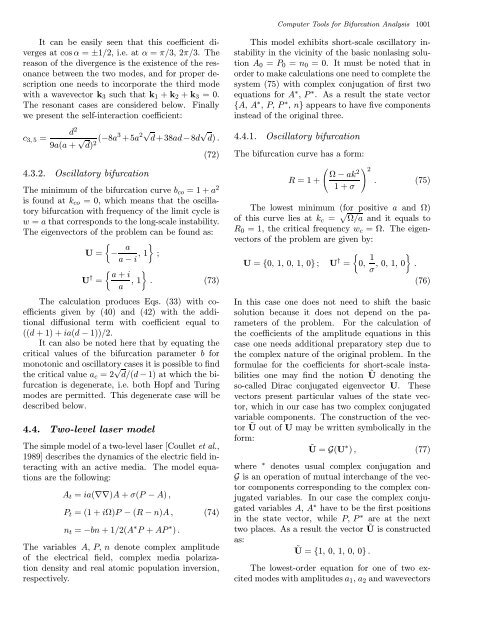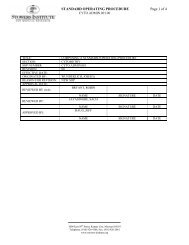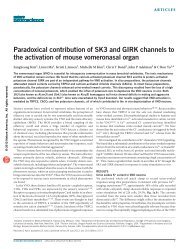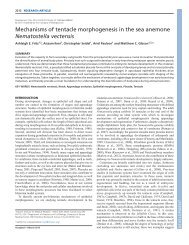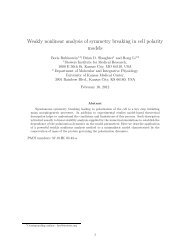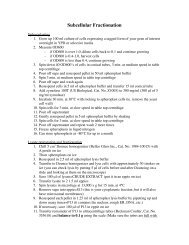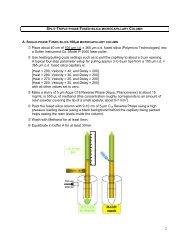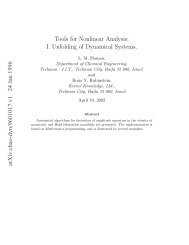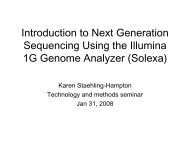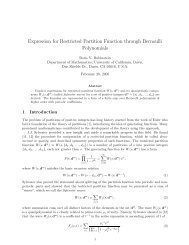Computer Tools for Bifurcation Analysis: General Approach with
Computer Tools for Bifurcation Analysis: General Approach with
Computer Tools for Bifurcation Analysis: General Approach with
Create successful ePaper yourself
Turn your PDF publications into a flip-book with our unique Google optimized e-Paper software.
<strong>Computer</strong> <strong>Tools</strong> <strong>for</strong> <strong>Bifurcation</strong> <strong>Analysis</strong> 1001<br />
It can be easily seen that this coefficient diverges<br />
at cos α = ±1/2, i.e. at α = π/3, 2π/3. The<br />
reason of the divergence is the existence of the resonance<br />
between the two modes, and <strong>for</strong> proper description<br />
one needs to incorporate the third mode<br />
<strong>with</strong> a wavevector k 3 such that k 1 + k 2 + k 3 =0.<br />
The resonant cases are considered below. Finally<br />
we present the self-interaction coefficient:<br />
c 3, 5 =<br />
d 2<br />
9a(a + √ d) 2 (−8a3 +5a 2√ d+38ad−8d √ d) .<br />
4.3.2. Oscillatory bifurcation<br />
(72)<br />
The minimum of the bifurcation curve b co =1+a 2<br />
is found at k co = 0, which means that the oscillatory<br />
bifurcation <strong>with</strong> frequency of the limit cycle is<br />
w = a that corresponds to the long-scale instability.<br />
The eigenvectors of the problem can be found as:<br />
{<br />
U = −<br />
a }<br />
a − i , 1 ;<br />
U † =<br />
{ a + i<br />
a , 1 }<br />
. (73)<br />
The calculation produces Eqs. (33) <strong>with</strong> coefficients<br />
given by (40) and (42) <strong>with</strong> the additional<br />
diffusional term <strong>with</strong> coefficient equal to<br />
((d +1)+ia(d − 1))/2.<br />
It can also be noted here that by equating the<br />
critical values of the bifurcation parameter b <strong>for</strong><br />
monotonic and oscillatory cases it is possible to find<br />
the critical value a c =2 √ d/(d − 1) at which the bifurcation<br />
is degenerate, i.e. both Hopf and Turing<br />
modes are permitted. This degenerate case will be<br />
described below.<br />
4.4. Two-level laser model<br />
The simple model of a two-level laser [Coullet et al.,<br />
1989] describes the dynamics of the electric field interacting<br />
<strong>with</strong> an active media. The model equations<br />
are the following:<br />
A t = ia(∇∇)A + σ(P − A) ,<br />
P t =(1+iΩ)P − (R − n)A, (74)<br />
n t = −bn +1/2(A ∗ P + AP ∗ ) .<br />
The variables A, P, n denote complex amplitude<br />
of the electrical field, complex media polarization<br />
density and real atomic population inversion,<br />
respectively.<br />
This model exhibits short-scale oscillatory instability<br />
in the vicinity of the basic nonlasing solution<br />
A 0 = P 0 = n 0 = 0. It must be noted that in<br />
order to make calculations one need to complete the<br />
system (75) <strong>with</strong> complex conjugation of first two<br />
equations <strong>for</strong> A ∗ ,P ∗ . As a result the state vector<br />
{A, A ∗ ,P,P ∗ ,n}appears to have five components<br />
instead of the original three.<br />
4.4.1. Oscillatory bifurcation<br />
The bifurcation curve has a <strong>for</strong>m:<br />
( )<br />
Ω−ak<br />
2 2<br />
R =1+<br />
. (75)<br />
1+σ<br />
The lowest minimum (<strong>for</strong> positive a and Ω)<br />
of this curve lies at k c = √ Ω/a and it equals to<br />
R 0 = 1, the critical frequency w c = Ω. The eigenvectors<br />
of the problem are given by:<br />
U = {0, 1, 0, 1, 0} ; U † =<br />
{0, 1 }<br />
σ , 0, 1, 0 .<br />
(76)<br />
In this case one does not need to shift the basic<br />
solution because it does not depend on the parameters<br />
of the problem. For the calculation of<br />
the coefficients of the amplitude equations in this<br />
case one needs additional preparatory step due to<br />
the complex nature of the original problem. In the<br />
<strong>for</strong>mulae <strong>for</strong> the coefficients <strong>for</strong> short-scale instabilities<br />
one may find the notion Ũ denoting the<br />
so-called Dirac conjugated eigenvector U. These<br />
vectors present particular values of the state vector,<br />
which in our case has two complex conjugated<br />
variable components. The construction of the vector<br />
Ũ out of U may be written symbolically in the<br />
<strong>for</strong>m:<br />
Ũ = G(U ∗ ) , (77)<br />
where ∗ denotes usual complex conjugation and<br />
G is an operation of mutual interchange of the vector<br />
components corresponding to the complex conjugated<br />
variables. In our case the complex conjugated<br />
variables A, A ∗ have to be the first positions<br />
in the state vector, while P, P ∗ are at the next<br />
two places. As a result the vector Ũ is constructed<br />
as:<br />
Ũ = {1, 0, 1, 0, 0} .<br />
The lowest-order equation <strong>for</strong> one of two excited<br />
modes <strong>with</strong> amplitudes a 1 , a 2 and wavevectors


